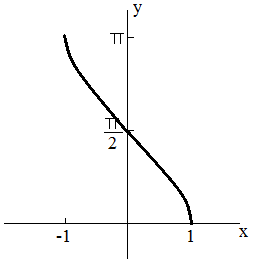Arccosine function calculator
y=arccos(x) Graph |
|||||||||||||||||||||||||||||||

|
|
||||||||||||||||||||||||||||||
What is an Arccosine (Inverse Cosine) Function Calculator?
An Arccosine Function Calculator is a tool used to compute the inverse cosine of a given number, denoted as arccos(x) or cos−1(x). The arccosine function returns the angle whose cosine is a given value. The result is usually expressed in radians or degrees within the domain of [0,π] radians (or [0∘,180∘]).
The formula for the inverse cosine function is:
arccos(x)=cos−1(x)where the domain is −1≤x≤1, because the cosine of any angle can only produce values within this range.
Why Use an Arccosine Function Calculator?
- Quick and accurate results: It provides the angle that corresponds to a given cosine value instantly, saving time and reducing the potential for errors.
- Solves trigonometric equations: It helps find angles when the cosine value is known, often used in geometry, physics, and engineering.
- Convenience: It avoids manually solving complex trigonometric equations or using trigonometric tables.
- Essential for certain applications: Useful in any field where angles and their relationships to cosine values are important.
How Does an Arccosine Function Calculator Work?
- Input a value: The calculator requires a value of xx x, where −1≤x≤1, as cosine values are limited to this range.
- Apply the inverse cosine formula: The calculator computes the angle θ such that cos(θ)=x.
- The result is expressed in either radians or degrees, depending on your settings.
- The value returned is typically between 0 and π radians (or between 0° and 180°).
- Display the result: The angle (in radians or degrees) corresponding to the given cosine value is shown.
When to Use an Arccosine Function Calculator?
- In geometry: When solving for angles in triangles, especially in cases where the cosine of an angle is known.
- In physics: To calculate angles in wave motion, forces, or rotational motion, where the cosine function is involved.
- In engineering: In problems involving trigonometry, such as in structural analysis, signal processing, or electrical engineering.
- In navigation and astronomy: To find angles or directions based on known distances or velocities, where trigonometric functions come into play.
- In computer graphics: For transformations, rotations, and rendering angles in 3D space.